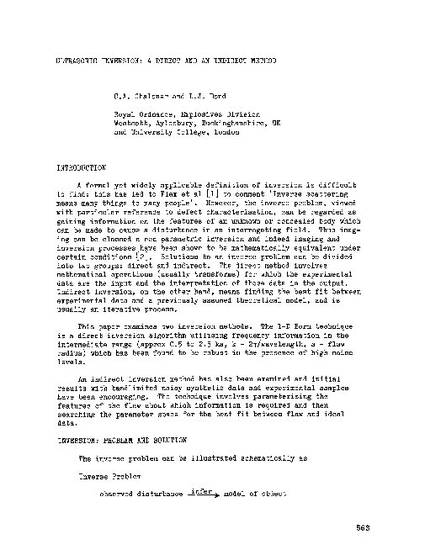
Article
Ultrasonic Inversion: A Direct and an Indirect Method
Review of Progress in Quantitative Nondestructive Evaluation
Location
La Jolla, CA
Start Date
1-1-1987 12:00 AM
Disciplines
Description
A formal yet widely applicable definition of inversion is difficult to find; this has led to Flax et al [l] to comment ‘Inverse scattering means many things to many people’. However, the inverse problem, viewed with particular reference to defect characterisation, can be regarded as gaining information on the features of an unknown or concealed body which can be made to cause a disturbance in an interrogating field. Thus imaging can be classed a non parametric inversion and indeed imaging and inversion processes have been shown to be mathematically equivalent under certain conditions [2]. Solutions to an inverse problem can be divided into two groups: direct and indirect. The direct method involves mathematical operations (usually transforms) for which the experimental data are the input and the interpretation of those data is the output. Indirect inversion, on the other hand, means finding the best fit between experimental data and a previously assumed theoretical model, and is usually an iterative process.
Book Title
Review of Progress in Quantitative Nondestructive Evaluation
Chapter
Chapter 2: Imaging, Microscopy, Inversion and Reconstruction
Section
Inversion and Reconstruction
Pages
563-571
DOI
10.1007/978-1-4613-1893-4_64
Copyright Owner
Springer-Verlag US
Copyright Date
January 1987
Language
en
File Format
application/pdf
Citation Information
C. A. Chaloner and Leonard J. Bond. "Ultrasonic Inversion: A Direct and an Indirect Method" Vol. 6A (1987) Available at: http://works.bepress.com/leonard_bond/31/
